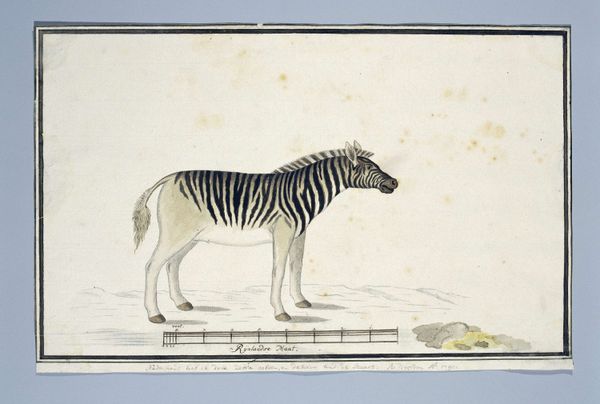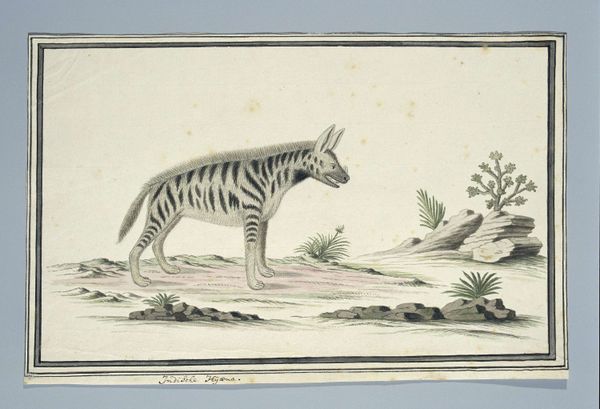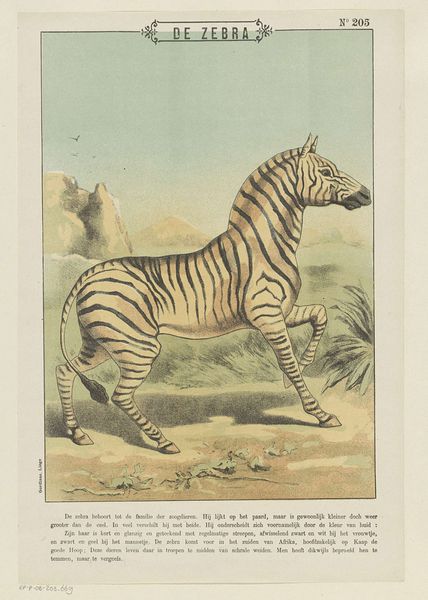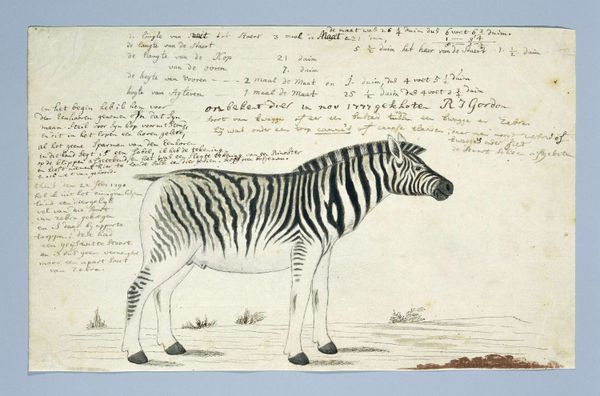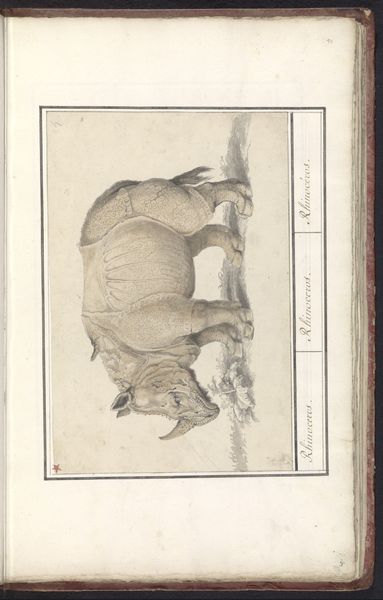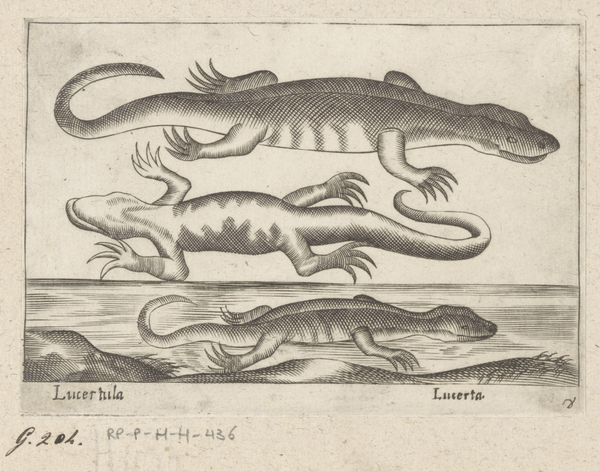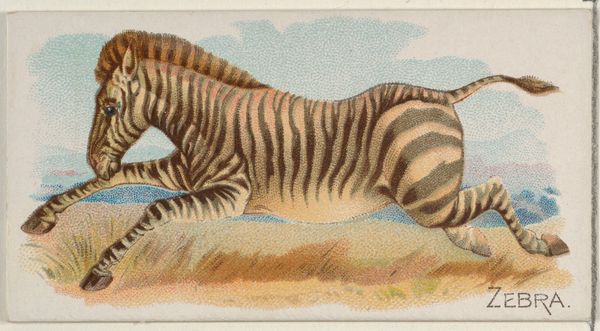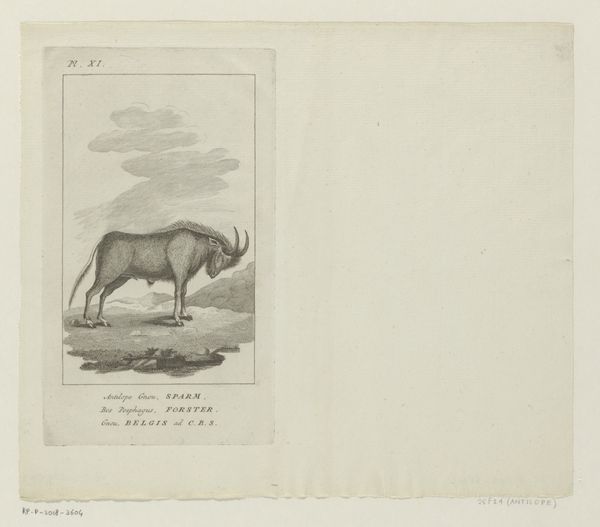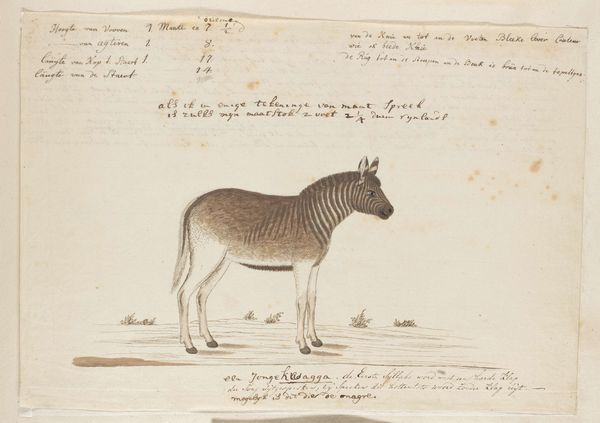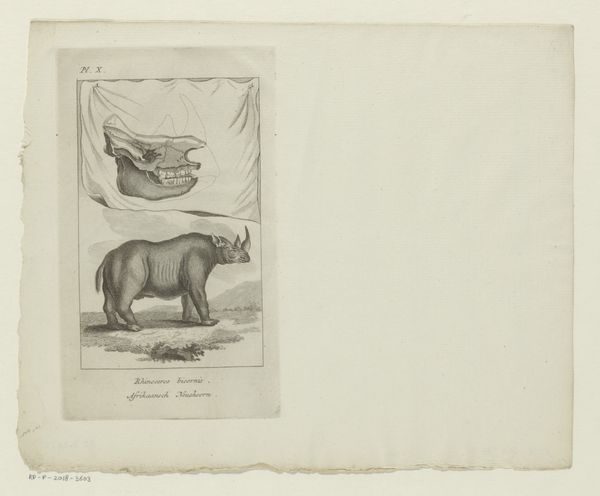
drawing, coloured-pencil, paper
#
portrait
#
drawing
#
coloured-pencil
#
landscape
#
paper
#
coloured pencil
#
realism
Dimensions: height 270 mm, width 430 mm
Copyright: Rijks Museum: Open Domain
Editor: This is "Zebra (Equus quagga)", a drawing created in 1795 by Ducq, using coloured pencils on paper. What strikes me immediately is the way the zebras are rendered almost scientifically, but still with a kind of naive charm. What are your thoughts? Curator: The first thing that stands out to me is the material context: colored pencils and paper in the late 18th century. This speaks to a burgeoning scientific interest in natural history. Consider the labor involved in producing these pencils, the mining of pigments, the refinement processes, the trade routes that brought them here. It was an expensive, laborious process. Editor: So, you're saying the choice of material is significant? Curator: Precisely. Paper too was precious; the production was tied to resource exploitation, to labor. This drawing isn’t just a rendering of an animal, but an artifact reflecting colonial trade routes, industrial development, and access to resources that would be completely inaccessible to many people. Do you think the representation of the zebra relates to ideas of ownership and consumption at the time? Editor: That’s interesting. I hadn’t thought about the connection to colonialism, but that makes total sense, documenting "exotic" animals to categorize and perhaps claim ownership over them. Curator: Exactly! And the supposed neutrality of the drawing flattens it. Look at the almost industrial, serial rendering of the animal's stripes. In the context of industrialization, are the stripes presented for their beauty, or as inventory of raw materials? Editor: I see what you mean. It's made me consider the act of documentation itself as a form of claiming or controlling nature. Curator: Indeed. Now that we are aware of material culture, and its relation to the history of production, hopefully it offers new depth of context when observing these artworks. Editor: This definitely gives me a new perspective on even seemingly simple artworks! Thanks!
Comments
No comments
Be the first to comment and join the conversation on the ultimate creative platform.
